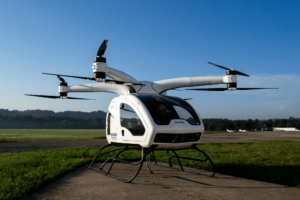You might remember George & Jane Jetson of Orbit City. The couple and their family lived in Orbit City and came to our attention in the 1962-63 television season on ABC TV. In the animated production, the Jetsons used a variety of futuristic devices, including a personal helicopter.
Workhorse Group of Cincinnati is working with the Federal Aviation Administration to begin production of its personal helicopter in 2019. Dubbed the Surefly, the two-seat device uses electric vertical takeoff and landing technology and is expected to sell for about $200,000. Test flights already are under way.

Interested customers can make a $1,000 deposit at workhorse.com to reserve one.
Commuters expect they can cut two-hour commutes to about 10 minutes with the Surefly, which has a cruising speed of up to 70 miles per hour. It can travel for more than two hours using battery power combined with a small engine. The device is about the size of a sedan.
Workhorse Group already produces a delivery drone, dubbed the Horsefly.
The Japanese government has launched a campaign to bring together companies and public agencies in a push to have similar vehicles aloft in the next decade. In the United States, ride service Uber announced an initiative last year to create flying vehicles.
Noise, flight paths and landing spots are among the problems posed by personal helicopters. But the time saved in commuting is likely to push the growth of the concept.
